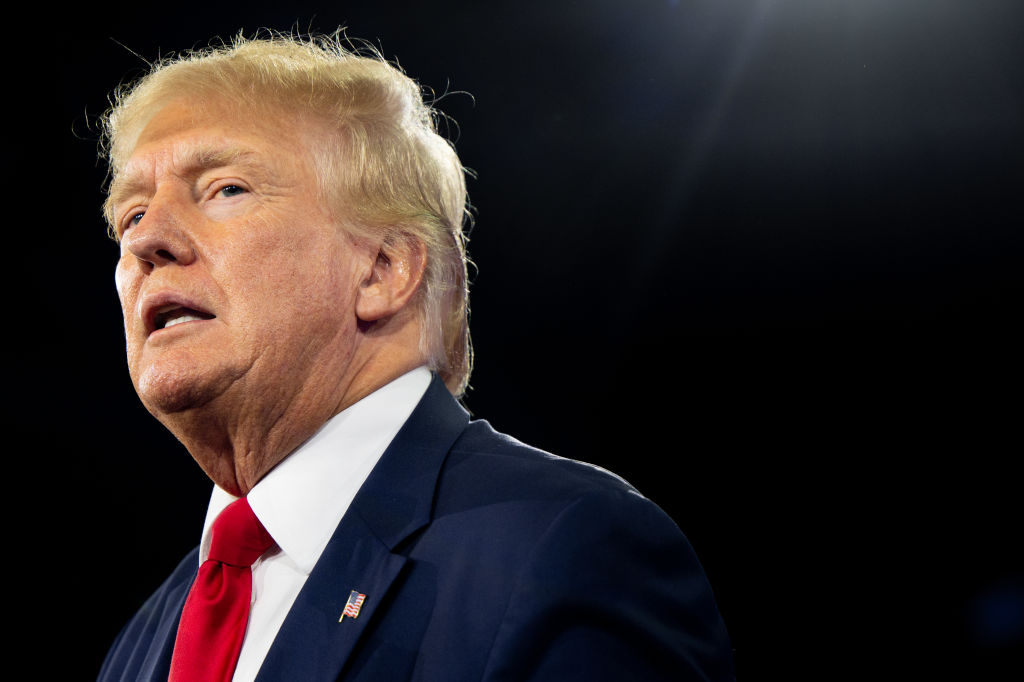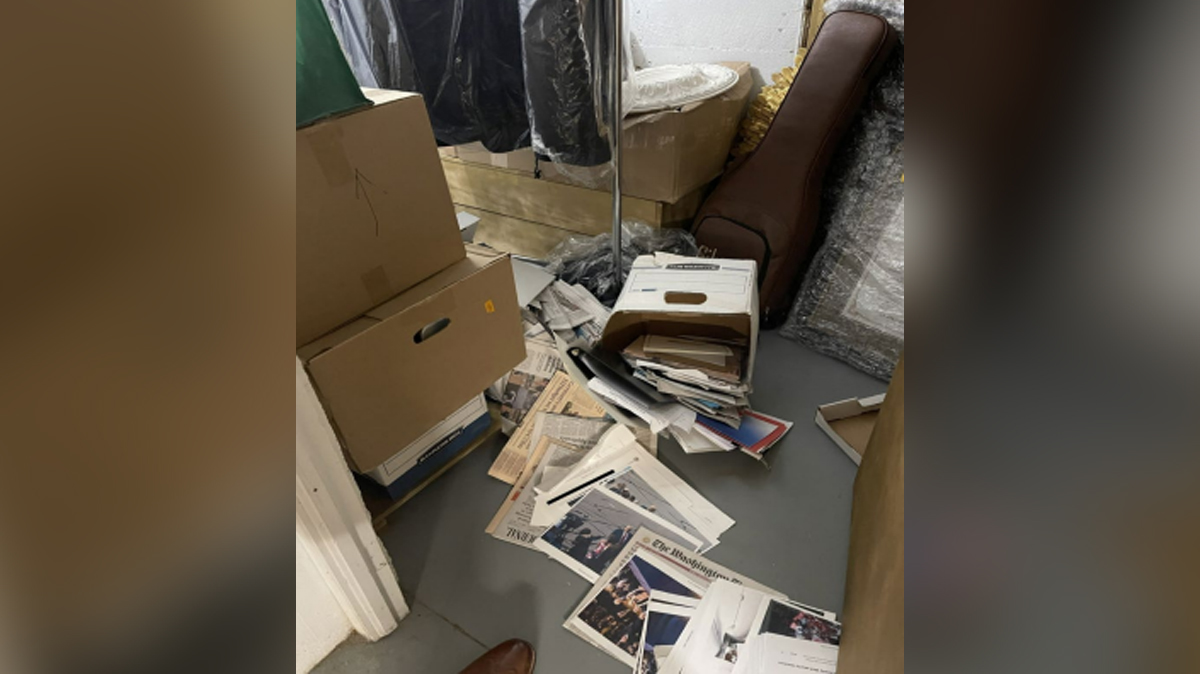The 49-page federal indictment of former President Donald Trump lays out a stunning timeline of events, detailing allegations that he not only mishandled sensitive material, but also took steps to hide records and impede investigators.
Here are some key of the key events leading to the 37 criminal charges against Trump, according to the indictment:
Jan. 20, 2021: As Trump leaves the White House, he directs the movement of dozens of storage boxes to Mar-a-Lago, prosecutors say. The boxes, packed by Trump and his White House staff, contain newspaper clippings, letters, photos and other mementos from his time in office, but also hundreds of classified documents that, as a former president, he wasn't authorized to have.
Get top local stories in San Diego delivered to you every morning. Sign up for NBC San Diego's News Headlines newsletter.
Under the Presidential Records Act, presidential records are considered federal, not private property and must be turned over to the National Archives and Records Administration. Multiple federal laws govern the handling of classified and sensitive documents, including statutes making it a crime to remove such material and keep it at an unauthorized location.
After Jan. 20, 2021: Some boxes brought from the White House are stored on a stage in one of Mar-a-Lago’s gilded ballrooms. A photo in the indictment shows boxes stacked on a stage.
March 15, 2021: Boxes are moved from the ballroom to the business center at Mar-a-Lago.
April 2021: Some boxes are moved into a bathroom and shower. A photo included in the indictment shows them stacked next to a toilet, a vanity and a trash can.
May 2021: Trump directs employees to clean out a storage room in a highly accessible area on Mar-a-Lago’s ground floor so it can be used to store his boxes, the indictment says. Trump also directs that some boxes be brought to his Bedminster, New Jersey, summer residence.
On or about May 6, 2021: Realizing that some documents from Trump's presidency may be missing, the National Archives asks that he turn over any presidential records he may have kept upon leaving the White House. The agency makes subsequent, repeated demands.
June 2021: The National Archives warns Trump through his representatives that it will refer the matter to the Justice Department if he does not comply.
June 24, 2021: Boxes are moved to the storage room. More than 80 boxes are kept there.
July 21, 2021: Trump allegedly shows a military “plan of attack” that he says is “highly confidential” to a writer interviewing him at his Bedminster property. Trump remarks, “as president I could have declassified it. ... Now I can’t, you know, but this is still a secret,” according to the indictment, citing a recording of the interview.
August or September 2021: Trump allegedly shows a classified map relating to a foreign military operation to a representative of his political action committee at his Bedminster golf course, the indictment says. Trump tells the person that he shouldn’t be showing anyone the map and that the person shouldn't get too close.
November 2021: Trump directs his executive assistant and “body man” Walt Nauta and another employee to start moving boxes from a storage room to his residence for him to review. Nauta is charged in the indictment as Trump’s co-conspirator.
Dec. 7, 2021: Nauta finds that several of Trump’s boxes have fallen, spilling papers onto the storage room floor, the indictment says. Among them is a document with a “SECRET" intelligence marking. According to the indictment, Nauta texts another Trump employee, “I opened the door and found this,” to which the other employee replies, “Oh no oh no.”
Late December 2021: The National Archives continues to demand that Trump turn over missing records from his presidency. In late December 2021, a Trump representative tells the agency that 12 boxes of records have been found and are ready to be retrieved.
January 17, 2022: Trump turns over 15 boxes to the National Archives. According to the indictment, Nauta and another Trump employee load them into Nauta's car and take them to a commercial truck for delivery to the agency.
The boxes are found to contain 197 documents with classified markings, including 69 marked confidential, 98 secret and 30 top secret. Some documents have markings suggesting they include information from highly sensitive human sources or the collection of electronic “signals” authorized by a court under the Foreign Intelligence Surveillance Act.
Feb. 9, 2022: The National Archives refers the matter to the Justice Department after a preliminary review finds the boxes contain numerous classified documents. The special agent in charge of the agency’s Office of the Inspector General writes, “Of most significant concern was that highly classified records were unfoldered, intermixed with other records" and otherwise improperly identified.
Feb. 10, 2022: Trump’s Save America PAC releases a statement insisting the return of the documents had been “routine” and “no big deal.” Trump insists the “papers were given easily and without conflict and on a very friendly basis,” and adds, “It was a great honor to work with" the National Archives "to help formally preserve the Trump Legacy.”
Feb. 18, 2022: In a letter to a congressional oversight committee, the National Archives reveals the boxes contained classified information and confirms the Justice Department referral. Trump’s Save America PAC releases another statement insisting, “The National Archives did not ‘find’ anything,” but “were given, upon request, Presidential Records in an ordinary and routine process to ensure the preservation of my legacy and in accordance with the Presidential Records Act.”
March 30, 2022: The FBI opens its investigation.
April 12, 2022: The National Archives informs Trump that, at the Justice Department's request, it intends to provide the FBI with the 15 boxes he turned over on Jan. 17, 2022. Trump’s representative asks for an extension until April 29.
April 26, 2022: The grand jury investigation begins.
April 29, 2022: The Justice Department asks Trump’s lawyers for immediate access to the 15 boxes, citing national security interests and the need for “an assessment of the potential damage resulting from the apparent manner in which these materials were stored and transported.” Trump’s lawyers again ask for an extension, saying they need to review the material to “ascertain whether any specific document is subject to privilege.”
May 10, 2022: The National Archives informs Trump’s lawyers that it will provide the FBI access to the boxes as soon as May 12.
May 11, 2022: A grand jury issues a subpoena to Trump and his office requiring that they turn over all classified materials in their possession.
May 23, 2022: Trump’s lawyers advise him to comply with the subpoena, but Trump balks, telling them, “I don’t want anybody looking through my boxes." Prosecutors, citing notes from one of the lawyers, say Trump wondered aloud about dodging the subpoena, asking his counsel, “Wouldn't it be better if we just told them we don’t have anything here?” and ”isn't it better if there are no documents?"
May 26, 2022: Nauta is interviewed by the FBI and, according to prosecutors, repeatedly lies about his knowledge of the movement of boxes at Mar-a-Lago. Nauta claims he wasn't aware of boxes being brought to Trump’s residence for his review and says he didn't know how boxes turned over to the National Archives got to Trump’s residence.
Nauta also lies when asked whether he knew where Trump’s boxes were stored before they went to his residence and whether they’d been in a secured or locked location, prosecutors say. His reply, according to the indictment: “I wish, I wish I could tell you. I don’t know. I don’t — I honestly just don’t know.”
June 2, 2022: One of Trump’s lawyers returns to Mar-a-Lago to search boxes in the storage room and finds 38 additional classified documents — five documents marked confidential, 16 marked secret and 17 marked top secret. After the search, prosecutors say, Trump asks: “Did you find anything? ... Is it bad? Good?” and makes a plucking motion that the lawyer takes to mean that he should take out anything “really bad" before turning over the papers.
Prior to the search, prosecutors say, Trump had Nauta move 64 boxes from the storage room to his residence. Of those, 30 were moved back to the storage room, leaving 34 boxes in Trump’s residence and out of the lawyer’s sight.
June 3, 2022: FBI agents and a Justice Department lawyer visit Mar-a-Lago to collect the 38 classified documents from Trump’s lawyer. They are in a single accordion folder, double-wrapped in tape. While there, investigators are allowed to go to the storage room, but are “explicitly prohibited” from looking inside boxes, “giving no opportunity" for them “to confirm that no documents with classification markings remained,” according to a court filing.
Trump tells investigations he's “an open book,” according to the indictment. Another Trump lawyer, acting as his custodian of records, provides investigators a sworn certification that prosecutors say falsely claimed they had conducted a “diligent search” of boxes moved from the White House and “any and all responsive documents" were turned over.
Earlier in the day, prosecutors say, some boxes were loaded onto a plane so Trump could take them to Bedminster for the summer.
June 8, 2022: The Justice Department sends Trump’s lawyer a letter asking that the storage room be secured, and that “all of the boxes that were moved from the White House to Mar-a-Lago (along with any other items in that room) be preserved in that room in their current condition until farther notice.”
July 2022: The grand jury is shown surveillance video of boxes being moved at Mar-a-Lago.
Aug. 5, 2022: The Justice Department applies for a warrant to search Mar-a-Lago, citing “probable cause” that additional presidential records and classified documents were being stored there. U.S. Magistrate Judge Bruce Reinhart approves the application the same day.
Aug. 8 2022: The FBI searches searches Mar-a-Lago, seizing 102 classified documents — 75 in the storage room and 27 in Trump’s office, including three found in office desks.
The Justice Department says in a subsequent court filing that the results call “into serious question" earlier representations by Trump’s legal team that they had conducted a “diligent search” and that no classified documents remained.
Aug. 12, 2022: Reinhart makes public the warrant authorizing the Mar-a-Lago search. The document reveals that federal agents are investigating potential violations of three federal laws, including the Espionage Act.
Aug. 26, 2022: A highly redacted version of the affidavit laying out the FBI’s rationale for searching Mar-a-Lago is made public.
Aug. 30, 2022: After Trump's lawyers request a special master to review the documents for possible executive privilege, the Justice Department responds with a filing that reveals new details about the investigation and a photo of seized documents with marking like “TOP SECRET//SCI” splayed out on a Mar-a-Lago carpet.
June 8, 2023: A grand jury in Miami indicts Trump and Nauta. Trump announces the indictment on his Truth Social platform, calling it “a DARK DAY for the United States of America.” In a video post, he says, “I’m innocent and we will prove that very, very soundly and hopefully very quickly.”
June 9, 2023: The indictment is made public. It shows that Trump is charged with 37 felony counts, including conspiracy to obstruct justice, corruptly concealing a document or record and willful retention of national defense information. Nauta is charged with six counts, including conspiracy to obstruct justice.
Special counsel Jack Smith, who brought the case, makes a brief public statement at his office in Washington, saying: “Our laws that protect national defense information are critical to the safety and security of the United States and they must be enforced. Violations of those laws put our country at risk.”
June 13, 2023: Trump is scheduled to make an initial court appearance at 3 p.m. Tuesday at the federal courthouse in Miami.



